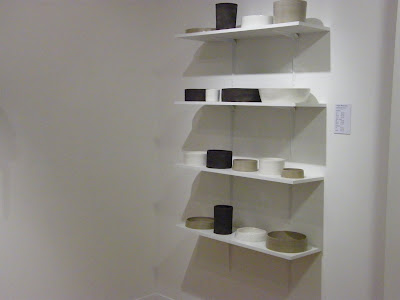c1650, the early industrial revolution, is when our everyday ceramics begin to emerge. Given that the early studio potters were making tableware within western styles, notably Michael Cardew,(Picture with some of his early pots from Winchcombe pottery, earthenware, slipware) even though they loooked to the past for inspiration they were making a 'modern' product.

imgurl=http://www.artsandcraftsmuseum.org.uk/uploads/artyfacts_archives/pattern_archives/sm_cardew.jpg&imgrefurl=http://www.artsandcraftsmuseum.org.uk/artyfacts/archive_images2.asp%3Fpage%3D2%26type%3D1%26name%3DPattern&usg=__IE4g0L80pcKyI5_M4-h_Uauc_0w=&h=111&w=148&sz=5&hl=en&start=38&um=1&tbnid=LX8tJBNQBZEXmM:&tbnh=71&tbnw=95&prev=/images%3Fq%3Dmichael%2Bcardew%26start%3D20%26ndsp%3D20%26um%3D1%26hl%3Den%26rlz%3D1T4ADBR_enGB226GB235%26sa%3DN
They made teacups and saucers, plates. These had only been in common usage at the time from c1750 when mass production became established. Indeed, these forms , by 1920 had only been around for 170 years. Not long when thinking about history. This is the paradox of the early studio potters. the forms that they reproduced only became commonwith industrialisation. Despite, the different meanings and roots of the modern, modernism, these potters can begin to be seen as working within a 'modern tradition'. If such a notion is at all possible.






